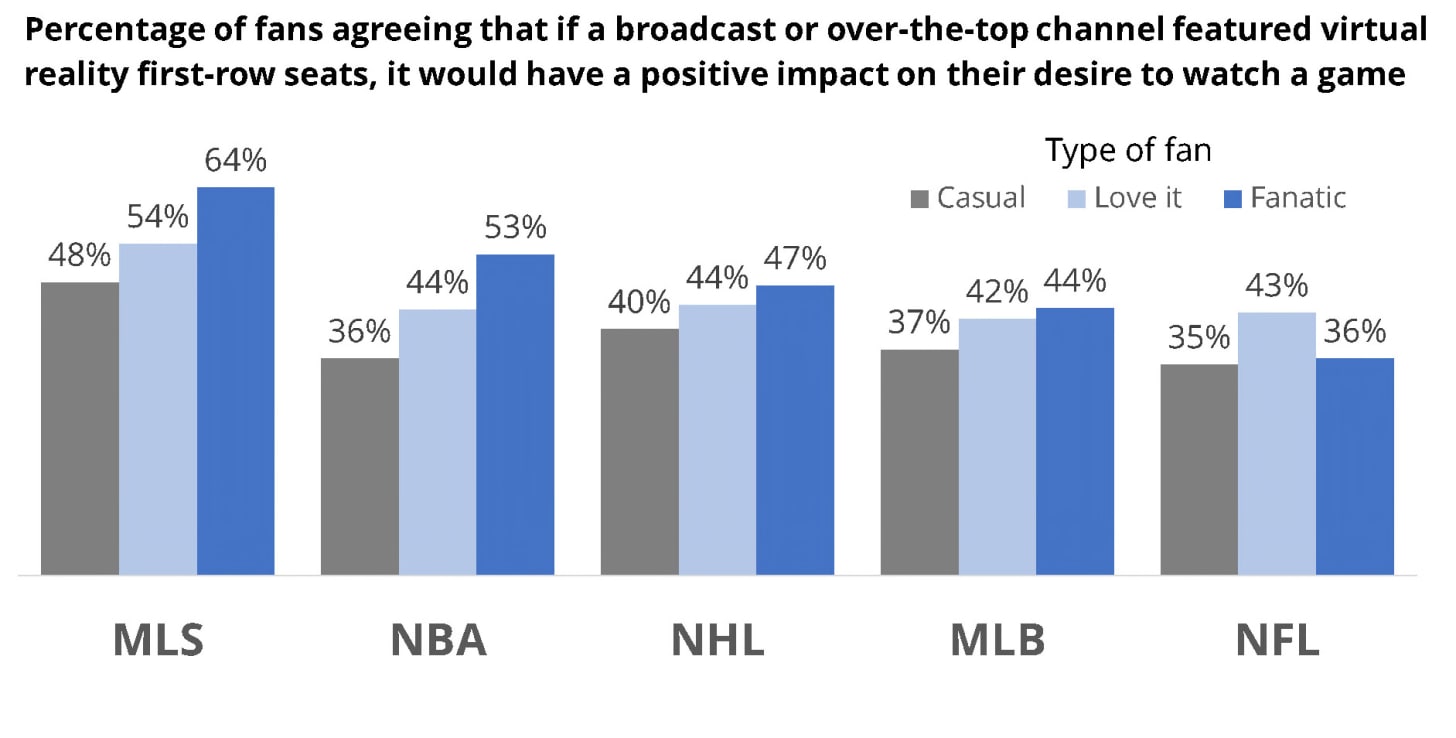Live Sports during COVID-19 and beyond
How VR could help sports teams and leagues make up lost ticketing revenue
Tomorrow the German Bundesliga will become one of the first major global sporting leagues to return to action following the COVID-19 pandemic.
But it will look quite different from usual - players won’t shake hands with opponents, they will be wearing masks if not on the pitch and they’ll stand 6 feet apart in the locker rooms.
Oh, and the games will be “ghost games” with absolutely no fans in the stadiums. As their detailed plans show, there will be a strict limit on the number of people around the stadium on match day.

In the short-term being able to resume live sports is a huge deal itself even with all the restrictions and no fans, especially given how important broadcasting revenues are to the teams.
But fans are critical to games to create an atmosphere that influences both the players and also makes the viewing experience on television more entertaining. So how is the league responding?
The short-term solution
Some teams such as Borussia Moenchegladbach are allowing supporters to buy cardboard cutouts of themselves for 19 euros, with proceeds going to charity. Over 12,000 of them have been ordered.

For audio, fans can use an app called MyApplause at home to tap cheer, whistle, clap, or sign. These sounds are then transmitted to the stadium through the loudspeakers (with volume levels dependent on the number of people tapping the sounds), and then can also be heard on television by viewers. These are clever solutions in the short-term which allow for some interactivity for fans at home and create some semblance of an atmosphere on the ground for the players.
The medium-term impact
But with timelines for a vaccine still unclear, its not unreasonable to believe that we won’t be able to have stadiums at full capacity for at least 18-24 months if not longer. How big a deal will that be?
For most leagues, the lion’s share of revenue comes from broadcasting and not gate receipts/matchday revenue. However, matchday revenue still represents ~15% of most leagues’ revenue.
This season alone, the NBA is looking at ~$500M in lost ticketing revenue and the Bundesliga about ~$75M with no fans in stadiums.

But six to 12 months from now, as things hopefully get closer to normal and there are *some* fans allowed in stadiums, do we expect them to get to been close to full capacity? If social distancing regulations are still in place, stadiums will probably be at 25-35% of capacity. And even if they aren’t, how many people will risk going to a stadium where 50K other people might be present?
In such a scenario, leagues may be looking reduction in attendance of ~50-70%, implying something like 5-10% of their revenue might be at risk. So how might they make it up?
VR as the middle tier
Today, the ratio of the average number of people watching a game at home to those watching in the stadium is somewhere on the order of ~100-250:1 depending on the sport.
In some sense, teams price discriminate by offering two tiers to consume the product – watch at home for close to free on television/streaming (monetized by ads and some carriage fees) or watch from the stadium for ~$50 (in fact, the stadium “product” is even further tiered to capture more of the surplus based on consumer willingness to pay).
As VR technology improves and with stadium capacity restricted or less attractive as an option in the wake of the pandemic, it might accelerate the offering of a VR experience as a middle-tier between the TV experience and the in-stadium experience.

At prices of say 10% of the stadium offering, all that’s needed is 5% of would-be TV viewers to upgrade to the VR experience, to bring in as much revenue as the gate receipts bring in today.
And we know that fans would be excited to consume sports in this fashion, as illustrated in the chart below from a survey from Deloitte.

Intel’s TrueView (which they acquired for $150M) and NextVR (which was just acquired by Apple) are some of the key players in the space so far who have been providing the technology to enable and capture the content in VR.
Some leagues have made progress towards this “middle-tier” with the NBA in particular at the forefront, offering an NBA VR pass for ~$50/yr which allows watching select games in VR. However, the coverage of games is still low, and while they’ve made big improvements in camera angles and the overall experience, there is still room for more improvements, particularly around the social aspects.
While other leagues have also dabbled in it, they haven’t really made a lot of games available for viewing live, largely because of two reasons:
Worrying about the cannibalization of ticket sales because VR will appeal to the fanatics who come to the stadium
Resting on the status quo because there hasn’t been a need to innovate and the technology is still nascent
With ticket sales likely to decline sharply over the next few years and the need for other streams of revenue, this could just be the push that leagues need to invest in VR. With hardware getting better and more accessible, and a big gap in revenue that clubs need to make up, innovating in VR might be a necessity for these leagues.
Perhaps the next time broadcasting rights are being auctioned off by the leagues, they even sell the VR broadcasting rights separately. And perhaps five years from now, ticket prices in stadiums are even more expensive as they become a truly-premium affair, with most of the fanatics watching at home with friends in VR.


Pretty neat and to the point writing man! Keep it up.